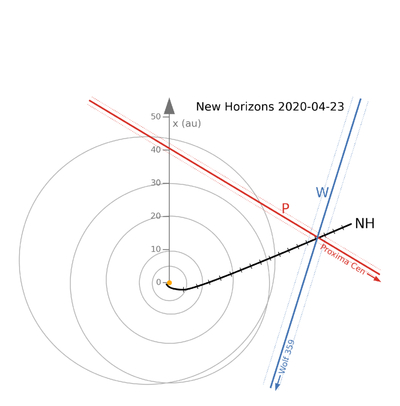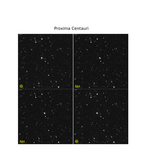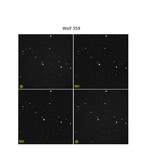Image Details

Caption: Figure 3.
The location of New Horizons on 2020 April 23 as derived from the directions to Proxima Cen and Wolf 359 measured from the spacecraft. The view is from the ecliptic north pole; the vertical axis is at zero RA. Gray circles show the orbits of the outer planets. Line of position P passes through the Gaia 3D location of Proxima Cen, in the direction measured from the spacecraft; the observations of Proxima Cen thus constrain the spacecraft to lie on line P. Similarly, observations of Wolf 359 constrain the spacecraft to lie on the line of position W. The faint dotted lines show how much P and W would be displaced by a 1″ change in line direction; the transverse displacement in astronomical units is just the distance to the star in parsecs (1.30 for P, 2.41 for W). The trajectory NH is the actual path of the spacecraft from launch in 2006 through 2023, marked with yearly tick marks. The actual angular uncertainties are much less than the 1″ indicated by the dotted lines. Line P is inclined ∼45∘indicated by the dotted lines. Line P is inclined ∼45∘ from the ecliptic.
Copyright and Terms & Conditions
© 2025. The Author(s). Published by the American Astronomical Society.






